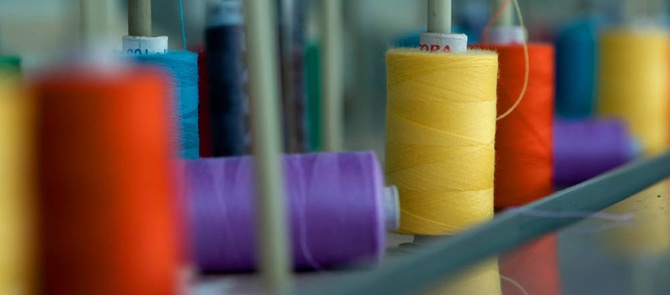In the modern era, most people do not tend to think of their clothes formally as “textiles” but in fact that is what they are. Textiles are the materials that are woven or knitted together and then developed into clothing. We think of this more commonly as “fabric.” The very first official textile fabric has been identified as felt and this was said to have first been created and used in the Stone Ages, about 100,000 years ago. Cotton, silk and linen were developed and used in Africa and Asia, as early as 5000 BC. Our ancient ancestors clothed themselves from the raw materials of nature and that trend has continued in various forms over time.
While, for the most part, societies of people all over the world today wear modern textiles, or fabrics, there are still direct-from-nature, non-manufactured raw textiles in use. Most times they are used for ceremonial purposes or cultural demonstrations. For example, in Hawaii, men and women who are entertaining tourists with cultural performances, or participating in spiritual ceremonies, may don wraps or skirts made of straw or grass and may use shells to make covers for the tops of their bodies.
On a day-to-day basis, most people wear manufactured clothing made from plant and animal based textiles. Also, common today are mineral-based synthetic man-made textiles. Before the rise of the Industrial Revolution, which enabled mass production with steam powered assembly plants, people made textiles by hand. Now most clothing manufacturing is mechanized, controlled by automated machines, robots and information technology computer systems. Some items are finished by hand in factories full of workers.
Here’s how each kind of textile has developed and been used over time:
Plant Based Textiles—Old As Time
Since vegetation or some kind of terrain has always been a part of the Earth as long as man has been on it, there has always been the availability and use of raw materials for fabrics, or textiles. Evolving to include crops like cotton, plant based textiles have always been a large and significant form of material for human clothing. Today, cotton continues to be the largest plant-derived material used for fabric creation as it is one of the bases of one of the most popular types of casual everyday clothing, the ever-classic blue jean pants. Straw, grass and bamboo are also raw plant materials used to make fabrics.
Animal Based Textiles—A luxury For All Times
Silk, wool, pashmina, furs and skins are common animal based textiles. Since the beginning of time, these have been considered luxuries but for varying reasons over the centuries. In ancient days, the raw materials to make silk clothing were unique to the Silk Road in China so the cost of journeys to voyage and get the fabric and take it back to the originating land, or have it shipped, was prohibitive, thus it was a luxury.
Other animal based textiles, such as furs, were more common throughout the world as hunters would use every part of the animal body for food, cleaning materials, and the skins and furs for clothing. Still, hunting was more dangerous then so furs were considered a luxury.
Today, voyages or hunting are not nearly as treacherous or difficult. However, furs and animal skins are a luxury because of the combination of protection of animal species, lower manufacturing levels due to environmental and animal rights concerns, and the modern economics of premium priced clothing.
Synthetic Based Textiles—A Timely Invention For Mass Style And Workplace Apparel
Polyester, acrylic, nylon, rayon and spandex are some of the most common and popular type of synthetic man-made materials in use for clothing today. Synthetic textiles were first developed in the mid-1900s.
As they have improved, these fabrics have been a boon for style based clothing retailers who have been able to create clothing stores that sell popular styles of fashion for relatively low prices that the average middle class person can afford.
In addition, synthetic materials have proved to be very helpful in the creation of uniforms and safety apparel used in workplaces. Unlike plant-based textiles, synthetic-based textiles can be made to provide protection from the elements. These materials can be waterproof, pest repellant, flame repellant, sub-temperature insulated, stain resistant and wrinkle resistant. Companies both in industrial and non-industrial settings have found synthetic textiles useful for professional, durable and safe clothing and quality uniforms for workplaces.
Featured images:
License: Image author owned
Jerry Martin has many years of experience in the distribution and sales of workplace textiles.





